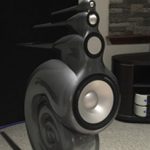What’s New in the Smart Home Energy Sector?
 By 2020, 44.1 million households will be utilizing smart home products within their homes, and nearly half of those households will have chosen to do so in order to practice smart home energy consumption. Since smart home energy products offer long-term cost savings, it’s no wonder that this sector has become one of the top three key market drivers in smart home adoption.
By 2020, 44.1 million households will be utilizing smart home products within their homes, and nearly half of those households will have chosen to do so in order to practice smart home energy consumption. Since smart home energy products offer long-term cost savings, it’s no wonder that this sector has become one of the top three key market drivers in smart home adoption.
Smart or Learning Thermostats, Smart Lights, Smart AC and Fans all fit within this sector, so here is a list of what’s new from this year’s International Consumer Electronics Show:
Smart or Learning Thermostats
A smart or learning thermostat studies when a home is likely to be occupied and automatically adjusts to the user’s preferred settings, in various conditions. Smart or Learning Thermostats can also act like controllers and coordinate with the lights of a house, window blinds, appliances, smart fans and smart switches among other Internet-of-Things-Enables household objects. Using a smart thermostat can save the average U.S. homeowner up to 12%-15% on heating costs and up to 15% on cooling costs.
Nest Learning Thermostat:
This programmable thermostat was developed by Nest Labs, which was acquired by Google. It learns the user’s preferences each time it is manually moderated. Also, it can detect the surrounding temperature and automatically regulate a home’s HVAC system and boiler. There are other products on the market that are labeled “Works with Nest” to highlight their compatibility with the thermostat and help the user save on energy bills.
Ween Smart Thermostat:
This thermostat is being developed by a French company and looks like a futuristic home-décor object. It comes with the regular features of a smart thermostat, but one distinguishing feature is that it pairs with the smartphones of everyone in the house and adjusts the temperature based on the user is at home.
Smart Lights
Smart lights can sense daylight or the occupancy in a room, and automatically turn off or on. Some lights can also be controlled by a smartphone or tablet and made to coordinate with music. Many of these lights can be set to simulate a sunrise during dark winter mornings in fact.
Philips Hue:
This is a remote-controlled lighting system with light bulbs that can be adjusted through a smartphone. The system allows the user to adjust the brightness, color and timing of the lights. It also comes with a host of preset lighting color combination for use in rooms where there is more than one light bulb.
Elgato Avea:
This smart light bulb pairs with Bluetooth and can be used only with Apple devices currently. It comes with a wake-up feature that brightens lights gradually, to simulate a sunrise.
Smart ACs and Fans
These are not air conditioners, but devices that work with them to adjust temperature automatically according to the weather outside. They turn the AC off and on based on the home’s occupancy. Smart fans are fans that can be operated through an app on a smart device.
Sensibo Smart AC:
This device works with regular ACs to transform them into smart devices that can be controlled from a smartphone. It learns the user’s preferred setting by recording his or her habits and adjusts accordingly. Also, it monitors local temperature and humidity, detects when a room is occupied and turns off the AC to conserve energy.
As always, Custom Audio Video is here to help you become one of those 44 million!










